My Pick for the Most Innovative Watch: The Ochs Und Junior Perpetual Calendar
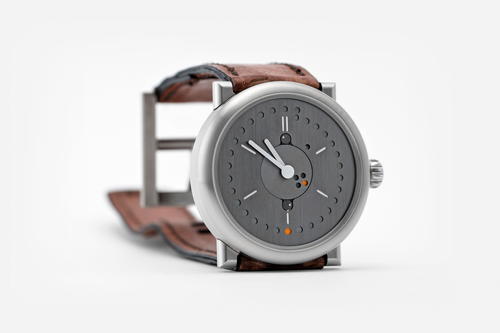
The Ochs Und Junior Perpetual Calendar
The Ochs Und Junior Perpetual Calendar is one of the most creative luxury watches we've seen in a long time. The dial includes only orange circles, six indices, and two hands yet it’s able to tell you the hour, the minute, the day, the month, the year, and the power reserve. Additionally, there’s a running seconds indicator and a section to tell you when it’s okay to set the day.
Confused? We were too. But the more we learned about this Ochs Und Junior watch, the more we loved it. The best news is that once you become familiar with the watch, it’s incredibly easy to read the information. You simply train your brain to translate the information.
NEW in 2017: Now you can customize your Ochs Und Junior perpetual calendar.
Let’s begin with the easiest information to master: the hours and minutes.
Similar to traditional watches, you use the hands to tell the time. The shorter hand indicates the hour and the longer hand indicates the minutes. The indices represent 2, 4, 6, 8, 10, and 12 o’clock, so if the short hand is pointing to between the 12 and 2, it’s obviously 1 o’clock. Minutes can also be accurately tracked. Each outer circle represents two minutes. Holes mark the even minutes and gaps mark the odd minutes. Between each of the indices, there are 5 holes representing 10 minutes.
Seconds are a bit harder to track since its shown on a smaller scale. At 6 o’clock you’ll find a white dot on a gray circle; the white dot travels in a circular motion to represent the passing seconds. When the white dot reaches the top of the circle, a minute has passed.
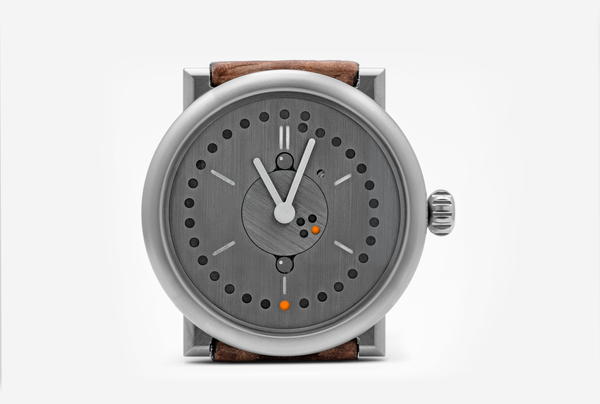
Moving on to the most interesting part of this watch: the perpetual calendar.
The date is represented by the orange dot on the outermost part of the dial. There are thirty-one circles around the dial, and each one represents a day. At the end of each day, the orange dot moves clockwise automatically. Instead of counting each circle individually, you can use the indices to quickly determine the date. There are five circles between each indices. As the orange dot passes an indices, five days have passed. If the orange dot is at 2 o’clock, you know that it’s the 5th of the month. If the orange dot is at 6 o’clock, you know it’s the 15th of the month. Determining the date quickly takes a while to get used to, but after a few days, it’ll become natural.
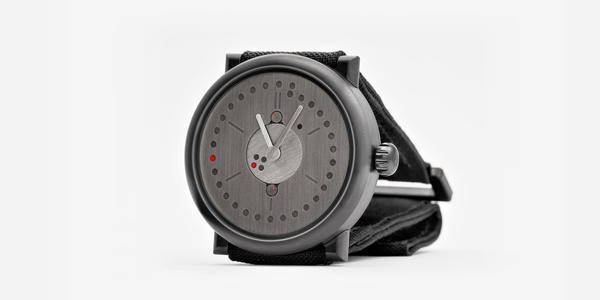
The month indicator is perhaps my favorite part of this watch. The grey disk in the center of the watch includes four circles. This disk rotates around the watch, pointing the four circles at different areas of the watch. You can determine the month by looking at whichever area the outermost circle is pointing to. A standard watch includes 12 hour indicators. Although this watch only includes 6, you can infer that the space between the indices represents the odd hours. There are 12 months in a year, and these 12 months match up with the 12 hours in a day. For example, if the four circles are pointing at 1 o’clock, you can assume it’s January. If the four circles are pointing at 8 o’clock, you can assume it’s August.
As for the year, this watch doesn’t give you the actual year. But it does tell you if it’s a leap year or a common year. To decipher this information, we’re going back to the four circles in the center of the watch. If the orange circle is on the outermost edge, you can tell it’s a leap year. If the orange circle is innermost, then it’s the second common year. There will be one more common year before the next leap year. The orange dot rotates clockwise at the beginning of every year.
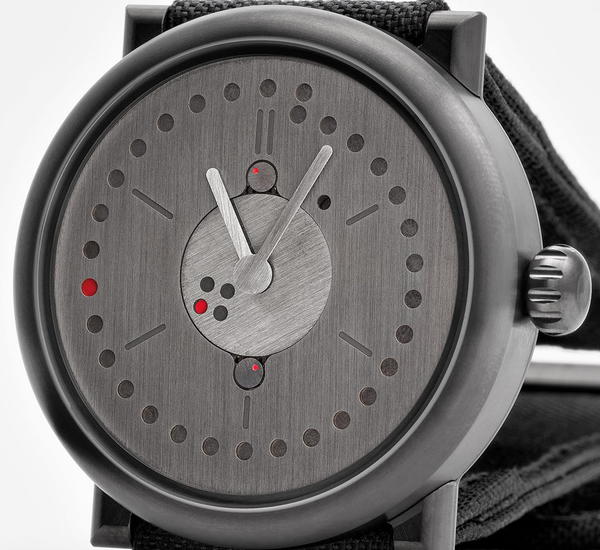
Next comes the control dot. Situated between and 1 and 2 o’clock, the control dot shows when it’s okay to adjust the date. The dot is visible at 7:50 am, and at that time it is safe for you to reset your date. Because this is an annual calendar, you typically only need to set the date when you first purchase the watch. The date, month, and year will be accurate until the year 2100.
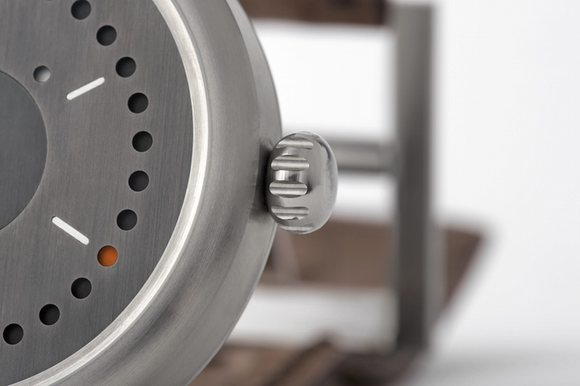
Last but certainly not least comes the power reserve indicator. The power reserve indicator is shown at 12 o’clock. When the watch is at full power, the dot is beneath the rightmost 12 o’clock marker. The dot will rotate clockwise around the disk, indicting the decreasing power reserve. The watch is on empty when the dot is beneath the leftmost 12 o’clock marker. This watch has a power reserve of 60 hours.

All-in-all, this minimalist watch is unlike any that I’ve seen before. It gives more information than you could possibly imagine at first glance. What do you think? Do you prefer more traditional watches or do you like the innovation of this Ochs Und Junior Perpetual Calendar?



